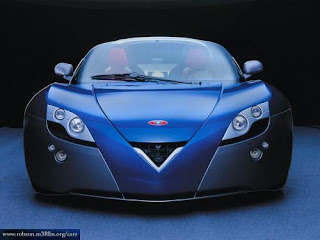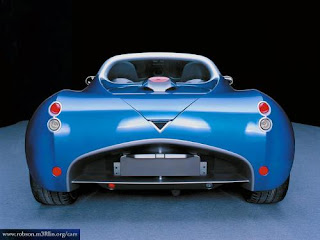
The Venturi Fétish is the world’s first production two-seater electric sports car. It is produced by Venturi in Monaco. It will remain an absolute rarity, since the manufacturer is committed to deliver only 25 vehicles worldwid

The car’s acceleration is comparable to a normal internal combustion engined sports car, producing approximately 250 horsepower (180 kW), with a 0-100 km/h (0-60 mph) time of “under 5 seconds” according to the 2007 press kit. Its top speed is less comparable however, at 160 km/h (100 mph), which is respectable considering that it only has one gear. It runs at a constant translation of 9.58 : 1, with a torque of 220 N·m (162 ft·lbf).

One other particular attraction of the car is that due to the electric traction motor, the full 220 N·m (162 ft·lbf) torque is available at all motor speeds including from a dead stop, as opposed to the progressive delivery of an internal combustion engined car, where full power is only available within certain RPM ranges.

The company specifies the car with a range of 250 km (combined use). The batteries are all lithium ion accumulators, offering a complete recharge in 1 hour (under 30 kW three-phase) and in 3 hours with a standard grid thanks to its onboard charger.

 The Venturi Fétish is the world’s first production two-seater electric sports car. It is produced by Venturi in Monaco. It will remain an absolute rarity, since the manufacturer is committed to deliver only 25 vehicles worldwid
The Venturi Fétish is the world’s first production two-seater electric sports car. It is produced by Venturi in Monaco. It will remain an absolute rarity, since the manufacturer is committed to deliver only 25 vehicles worldwid The car’s acceleration is comparable to a normal internal combustion engined sports car, producing approximately 250 horsepower (180 kW), with a 0-100 km/h (0-60 mph) time of “under 5 seconds” according to the 2007 press kit. Its top speed is less comparable however, at 160 km/h (100 mph), which is respectable considering that it only has one gear. It runs at a constant translation of 9.58 : 1, with a torque of 220 N·m (162 ft·lbf).
The car’s acceleration is comparable to a normal internal combustion engined sports car, producing approximately 250 horsepower (180 kW), with a 0-100 km/h (0-60 mph) time of “under 5 seconds” according to the 2007 press kit. Its top speed is less comparable however, at 160 km/h (100 mph), which is respectable considering that it only has one gear. It runs at a constant translation of 9.58 : 1, with a torque of 220 N·m (162 ft·lbf). One other particular attraction of the car is that due to the electric traction motor, the full 220 N·m (162 ft·lbf) torque is available at all motor speeds including from a dead stop, as opposed to the progressive delivery of an internal combustion engined car, where full power is only available within certain RPM ranges.
One other particular attraction of the car is that due to the electric traction motor, the full 220 N·m (162 ft·lbf) torque is available at all motor speeds including from a dead stop, as opposed to the progressive delivery of an internal combustion engined car, where full power is only available within certain RPM ranges. The company specifies the car with a range of 250 km (combined use). The batteries are all lithium ion accumulators, offering a complete recharge in 1 hour (under 30 kW three-phase) and in 3 hours with a standard grid thanks to its onboard charger.
The company specifies the car with a range of 250 km (combined use). The batteries are all lithium ion accumulators, offering a complete recharge in 1 hour (under 30 kW three-phase) and in 3 hours with a standard grid thanks to its onboard charger.
No comments:
Post a Comment